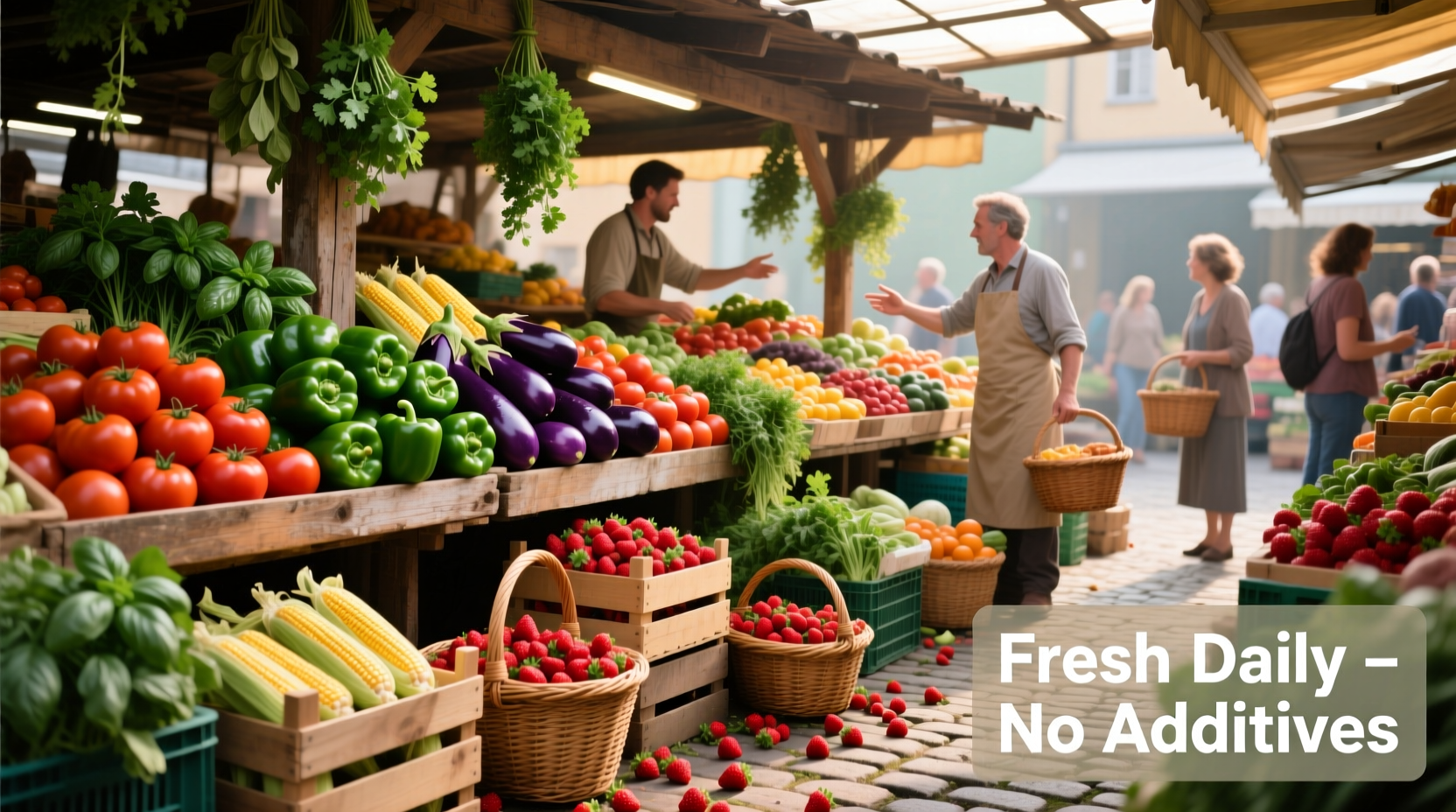Discover exactly what qualifies as non-processed food and how incorporating these natural options can transform your health. This comprehensive guide reveals the science-backed benefits, provides practical identification strategies, and offers actionable steps to build a diet centered around truly whole foods—without falling for common marketing traps.
Defining Non-Processed Foods: Beyond the Marketing Hype
When you ask "what are non processed foods," you're seeking clarity in a marketplace flooded with confusing labels. True non-processed foods undergo minimal to no alteration from their natural state. According to the USDA Dietary Guidelines, these foods contain no added substances including salt, sugar, or fats, and haven't been subjected to industrial processing methods.
Consider this practical distinction: an apple picked from a tree is non-processed. That same apple turned into applesauce with added sugar becomes processed. The critical factor isn't preparation method (slicing or cooking at home doesn't count as processing) but whether the food has been significantly altered from its natural composition through industrial methods.
Processed vs. Non-Processed: The Clear Differentiation
| Non-Processed Foods | Processed Foods | Ultra-Processed Foods |
|---|---|---|
| Fresh fruits and vegetables | Canned vegetables with salt | Frozen pizza with multiple additives |
| Raw nuts and seeds | Roasted salted nuts | Flavored protein bars |
| Whole grains (oats, quinoa) | Breakfast cereals | Sweetened breakfast cereals |
| Plain yogurt | Flavored yogurt | Yogurt with artificial colors and sweeteners |
| Raw meat/fish | Cold cuts | Instant noodles |
This classification follows the NOVA food processing framework widely adopted by nutritional researchers. The key differentiator isn't whether food has been cooked or prepared, but whether industrial processes and added substances have fundamentally changed the food's natural composition.
The Evolution of Food Processing: A Historical Perspective
Understanding what qualifies as non-processed food requires context about how food processing has evolved. Traditional food preservation methods like drying, fermenting, and smoking—practiced for thousands of years—don't necessarily make foods "processed" in the modern sense. These methods typically use minimal ingredients and maintain the food's essential nutritional profile.
The significant shift occurred during the Industrial Revolution when mechanical processing, chemical additives, and mass production techniques transformed our food supply. According to research published in The American Journal of Clinical Nutrition, the introduction of refined flour in the late 19th century marked one of the first major departures from whole, non-processed grain consumption.
Science-Backed Benefits of Choosing Non-Processed Foods
Multiple studies confirm the health advantages of prioritizing non-processed foods. Research from Harvard T.H. Chan School of Public Health demonstrates that diets rich in whole, non-processed foods correlate with:
- 23% lower risk of developing type 2 diabetes
- 17% reduced likelihood of cardiovascular disease
- Significantly better weight management outcomes
- Enhanced gut microbiome diversity
The nutritional superiority stems from non-processed foods retaining their complete nutrient profile—fiber, vitamins, minerals, and phytochemicals that often get stripped away during industrial processing. For example, whole wheat berries contain all three parts of the grain (bran, germ, endosperm), while refined white flour retains only the starchy endosperm.

Practical Identification: Finding True Non-Processed Options
Navigating grocery stores to find genuinely non-processed foods requires strategy. Here's how to identify them:
Produce Section Strategy
Focus on perimeter shopping where fresh produce typically resides. Look for fruits and vegetables with no stickers indicating pre-cut preparation. Remember that "organic" doesn't automatically mean non-processed—organic cookies are still processed foods.
Reading Labels Effectively
When purchasing packaged items, follow this rule: if the ingredient list contains more than five items or includes substances you wouldn't use in home cooking (like maltodextrin or carrageenan), it's processed. Truly non-processed packaged foods might include frozen vegetables with "ingredient: peas" or canned beans with "ingredients: beans, water."
Understanding Context Boundaries
Not all processing is problematic. Some minimally processed options like frozen vegetables (flash-frozen at peak ripeness) can be nutritionally comparable to fresh. The FDA recognizes that certain processing methods can enhance food safety and nutrient availability—like cooking tomatoes to increase lycopene absorption. The key is distinguishing between minimal processing that preserves nutritional integrity and extensive processing that fundamentally alters food composition.
Building Your Non-Processed Food Lifestyle
Transitioning to a diet centered around non-processed foods doesn't require perfection. Start with these practical steps:
- The 80/20 rule: Aim for 80% of your diet to be non-processed foods, allowing flexibility for occasional processed items
- Batch preparation: Dedicate 2 hours weekly to washing, chopping, and storing fresh produce for easy access
- Smart substitutions: Replace processed snacks with raw nuts, fresh fruit, or vegetable sticks with hummus
- Home cooking focus: Prepare meals using whole ingredients rather than relying on pre-made options
Remember that cultural food traditions often incorporate non-processed foods in delicious ways. Exploring global cuisines can provide inspiration—Mediterranean diets feature abundant fresh produce, whole grains, and olive oil, while traditional Asian diets emphasize vegetables, fish, and fermented foods.
Addressing Common Misconceptions
Several myths cloud understanding of non-processed foods. Let's clarify:
Myth: "All processed foods are bad."
Reality: Some processing enhances safety and nutrition. Pasteurized milk prevents disease, and cooking certain vegetables increases nutrient availability.
Myth: "Non-processed foods are always more expensive."
Reality: While some specialty items cost more, staples like beans, lentils, seasonal produce, and whole grains are often more economical per nutrient than processed alternatives.
Myth: "Organic automatically means non-processed."
Reality: Organic certification relates to farming methods, not processing. Organic cookies are still processed foods with added sugars and fats.
Creating Sustainable Change
Successfully incorporating more non-processed foods requires understanding your personal context. Research from CDC's nutrition program shows that people who connect their food choices to personal values—whether health, environmental concerns, or cultural traditions—maintain dietary changes longer.
Start small: replace one processed item in your regular rotation with a non-processed alternative. Perhaps swap sugary breakfast cereal for steel-cut oats, or replace packaged snacks with fresh fruit. Gradual changes create sustainable habits rather than overwhelming restrictions.











 浙公网安备
33010002000092号
浙公网安备
33010002000092号 浙B2-20120091-4
浙B2-20120091-4